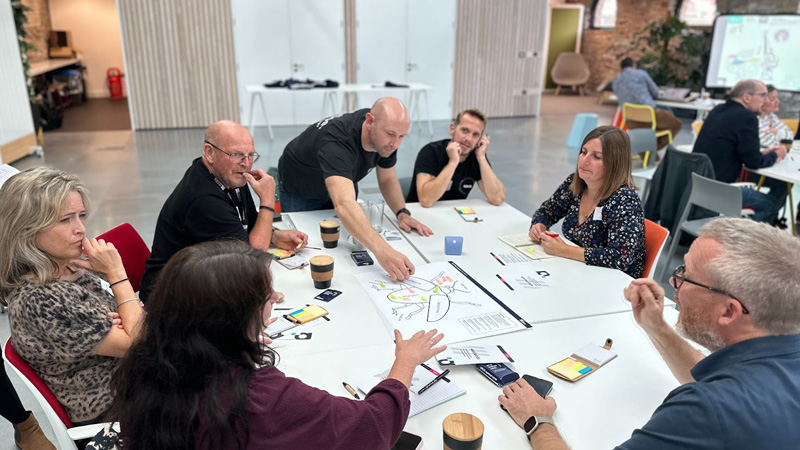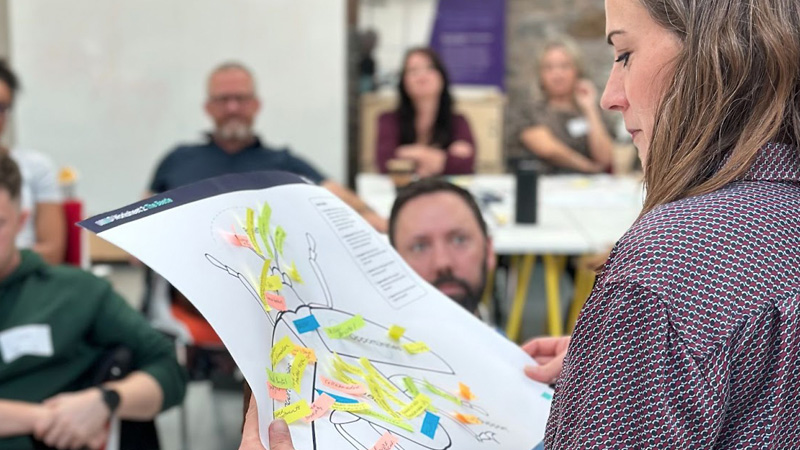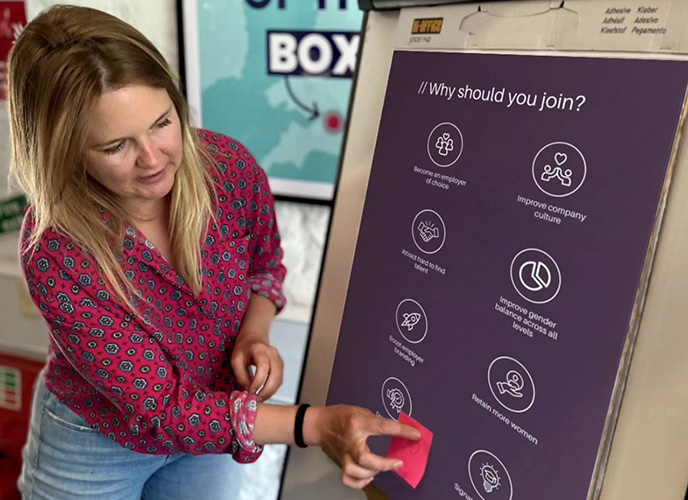
Uniting the South West for Creative Tech Innovation: Insights from the “SXSW UK IS BEING HOSTED WHERE?” Workshop
As part of this year's Bristol Technology Festival, Aer Studios partnered up with MyWorld and Bristol Creative Industries to host Creative Day, an exciting day filled with workshops, talks and exhibitions all around the creative tech industry.
One of the highlights of the day was the workshop we ran called "SXSW UK IS BEING HOSTED WHERE?", where we explored why the South West—Bristol, Bath, and beyond—should be the true stage for creative tech innovation, rivalling London as the host for European SXSW in 2025.


The workshop gathered some of the brightest minds and leaders from the region’s creative tech industry, all eager to contribute ideas on how the South West can elevate its creative tech scene to the national and global spotlight. Using Aer Studios' proprietary UX&D method cards and worksheets, we guided participants through a series of thought-provoking discussions and even had live illustrator Ralph capture the essence of the conversation visually as it unfolded.
Sparking Inspiration: What3Words
We started with a rapid activity called What3Words that encouraged participants to describe Creative Tech in the South West using only three words.


We have created a word cloud that reveals a fascinating mix of perceptions and themes, setting the stage for a deeper exploration of the region’s potential.
The most common themes were Innovation, Collaboration, Diversity, and an Underdog Mentality, coupled with a sense of Heritage, Creativity, and Potential for Growth to take to the world stage as a global leader in Creative Tech. Organisations mentioned included were Pervasive Media Studio, Aardman, My World, BBC Natural History Unit and Bottle Yard Studios.
Activity Two: The Beetle
At the heart of the workshop was an activity we called The Beetle, where participants worked in teams to discuss and analyse the strengths, barriers, opportunities, and support needed for the South West’s creative tech sector to grow into a global leader. Using our beetle worksheet divided into four key sections, teams added their insights, sparking meaningful discussions on the region's unique qualities, challenges, and opportunities for innovation and growth.

Strengths: Harnessing the Power of Collaboration and Creativity
Across the board, participants felt that the South West, especially Bristol, stands out for its unique talent and diversity. The city’s laid-back atmosphere fosters a creative environment, while its productive stubbornness and contrarian spirit drive high levels of productivity and profitability. Bristol’s international reach was also recognized, with many feeling that the region should be focusing on global peers like Vancouver and Sydney, rather than constantly comparing itself to London. Collaboration was another standout theme. The South West’s ability to cross sectors and bring together people from different industries, supported by a distributed network of funding and leadership, was seen as a unique strength. Additionally, the region's authenticity, generosity, and rebellious spirit were celebrated as key characteristics that contribute to its creative identity. Participants also emphasised the importance of our world-class universities in Bristol and Bath, R&D facilities, and connected skills and resources in positioning the South West as a hub for creativity and innovation.

Barriers: Addressing Perception and Fragmentation
However, the workshop also revealed several barriers the South West must overcome. A common theme was the outdated perception of the region as parochial and old-fashioned, which could limit the region’s appeal to external clients and investors. Participants pointed out that while Bristol’s anti-authority mindset is part of its charm, it can hinder the region’s ability to scale and attract large investments.
Additionally, many highlighted the over-reliance on grants as a challenge to long-term growth, calling for more sustainable financial models.
The lack of a unified vision and leadership was a major concern. Without a central figure or group to drive the region’s strategy, efforts are diluted across a geographically dispersed area. This fragmentation also affects networking, with many participants feeling that while they are well-connected within their circles, the region lacks a single point of convergence for the entire community. Additionally, the region's lack of self-promotion and modesty was seen as a barrier to showcasing its capabilities and attracting attention from outside.
Opportunities: Tapping into Global Potential and Leadership
The discussions revealed several exciting opportunities for the South West. Many participants felt that the region’s location advantages, such as its strong transport links and proximity to major cities, could be leveraged more effectively. There was also enthusiasm for celebrating Bristol’s authenticity, rather than trying to emulate London, and competing more aggressively for talent, particularly from larger cities like Manchester and London.
One of the most exciting ideas was the potential to host a "Guerrilla South by Southwest" type of event showcasing the city’s energy and creativity on a global stage.
Participants also saw an opportunity to reframe leadership and vision, with the creation of a centralised leadership group or steering committee that could unify efforts and help attract major events like SXSW.
Additionally, participants emphasised the need to better connect companies with investors and streamline funding through focused investment channels. There was widespread support for appointing high-level ambassadors, particularly from the political sphere, to raise the region’s profile and advocate for its capabilities on the global stage. Lastly, participants highlighted the importance of tapping into untapped local talent to bring fresh ideas and energy to the sector.
Support Needed: Building Momentum for the Future
To fully realise its potential, the South West’s creative tech sector needs several forms of support. Increased financial backing was highlighted as essential, with participants calling for more investment to build momentum behind local initiatives. Engagement from larger tech employers was seen as crucial, with these companies being encouraged to play a more active role in engaging with schools, colleges, and universities to foster and inspire new talent. Participants also emphasised the need for local government support to drive improvements and help the sector grow. The idea of a clear brand and vision was seen as vital for galvanising support and effectively pitching for major events. Many groups highlighted the importance of advocacy and better promotion of the region’s strengths to enhance its visibility both nationally and globally.
Support for freelancers and cohesion across the sector was also a key point, with participants calling for a singular voice to advocate for the South West’s creative tech scene. The devolved administration was seen as an opportunity to scale the sector, with political alignment helping to drive growth. Finally, ensuring the legacy of initiatives like MyWorld and nurturing regional talent was considered essential for the long-term success of the South West’s creative tech industry.

Conclusion
This creative tech workshop sparked meaningful conversations and provided valuable insights into the strengths, challenges, and opportunities of the South West’s creative tech sector. With the right support, unified leadership, and focused vision, the region has the potential to grow into a global leader and perhaps one day become the stage for a prestigious event like SXSW.
We are excited to continue these conversations and work towards building a brighter future for creative tech in the South West supported by institutions like TechSpark, BCI, SetSquare, and WECA.




